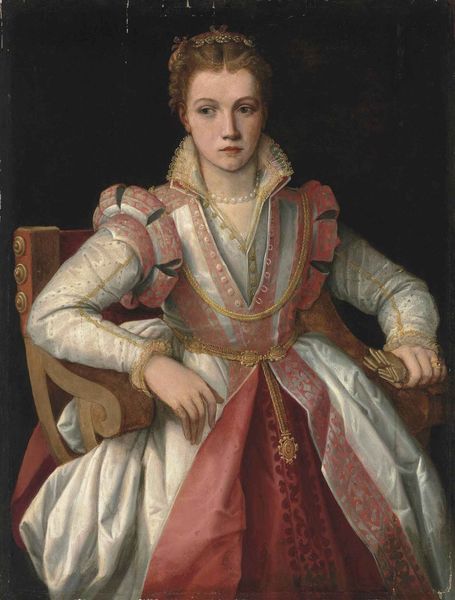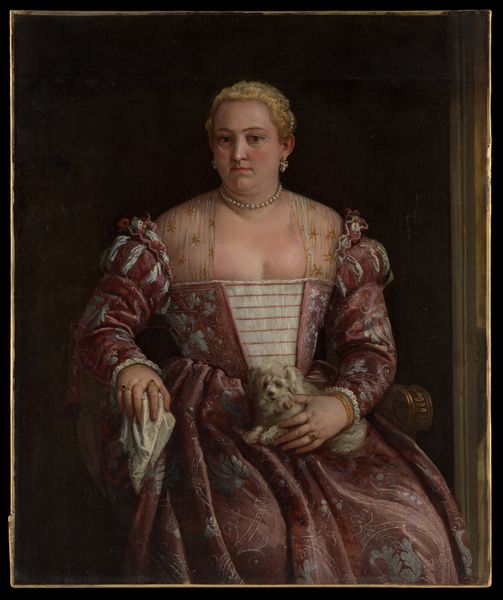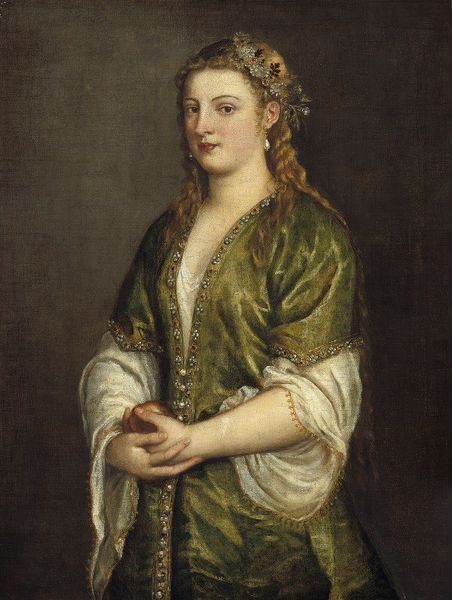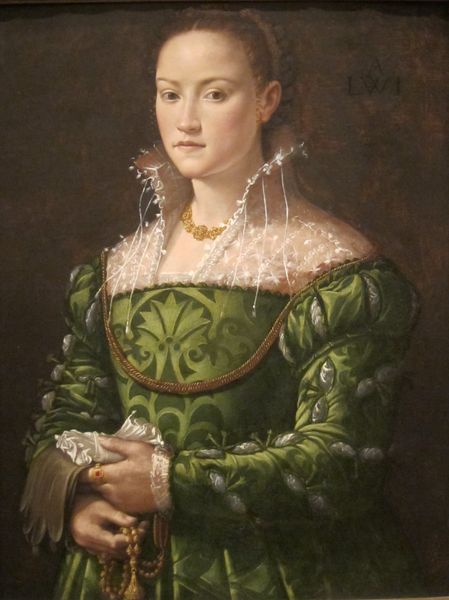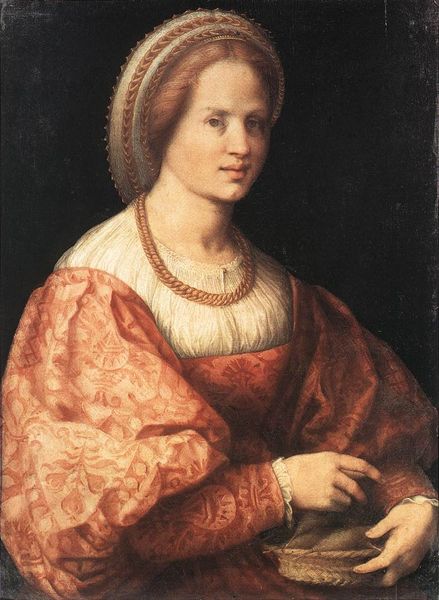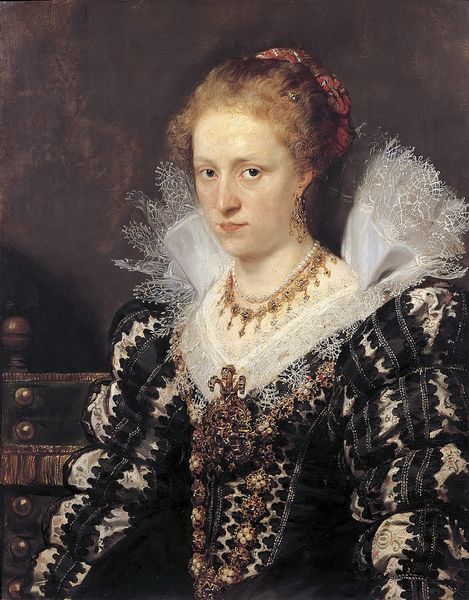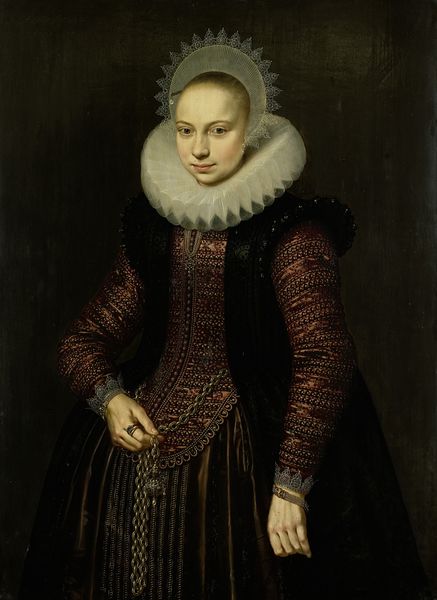
oil-paint
#
portrait
#
oil-paint
#
oil painting
#
genre-painting
#
italian-renaissance
#
portrait art
Dimensions: height 133.5 cm, width 98 cm, depth 10.5 cm
Copyright: Rijks Museum: Open Domain
Editor: This is Francesco Montemezzano’s "Portrait of a Woman with a Squirrel," dating from sometime between 1565 and 1575. It’s oil on, presumably, canvas. What strikes me most is the…strangeness of the squirrel. I mean, it’s an odd detail to include. What do you see in this piece, especially concerning the imagery and symbolism? Curator: The squirrel is indeed a key. Renaissance portraits were rarely just about likeness; they were steeped in symbolism. The squirrel, in this case, offers a clue. It might be a family crest, or, even more intriguing, it may represent the soul. Consider the rich fabrics; do they speak of earthly vanity or a deeper spiritual yearning? Editor: So, the squirrel as the soul… I hadn’t thought of that. Does the woman's gaze play into this idea as well? She isn’t exactly looking *at* us. Curator: Exactly. Her gaze drifts slightly, almost introspective. This directs us to consider her inner world. The jewelry and the luxurious clothing could represent external status, but her expression, along with the squirrel, hints at something more profound, a tension between the earthly and the spiritual. Ask yourself, what other clues might Montemezzano be providing us? Look at the setting beyond the woman, which could contain a significant meaning behind the subject. Editor: I notice what seems to be some feather behind her as well, and it appears that she may be posed in front of a small window in a very dark room. It’s so subtle. It's like the artist wanted it to be just noticeable. Curator: The feather you noticed often represents virtue or faithfulness in Renaissance portraiture and in the same line of thinking, the partially visible window could symbolize hope, a view towards something brighter than her present station. Together these symbols offer hope with respect to a deeper understanding of who she is, and may have become during her lifetime. Do these additional factors change your perception of her internal condition at all? Editor: Absolutely. It makes me see her not just as someone wealthy, but perhaps someone contemplative, even burdened. I had initially overlooked that. I definitely gained an enriched vision. Thank you. Curator: Indeed! By learning how to read these symbols, Renaissance portraits reveal far more than just appearances.
Comments
No comments
Be the first to comment and join the conversation on the ultimate creative platform.
